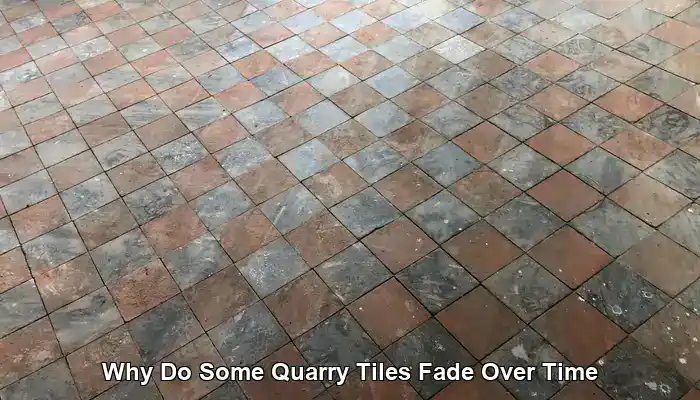
Quarry tiles are celebrated for their exceptional durability, earthy aesthetic, and timeless design. These versatile tiles can enhance the beauty of both rustic kitchen floors and cozy outdoor patios, thanks to their ability to endure heavy foot traffic and challenging weather conditions. However, despite their robust nature, homeowners and property managers often notice a gradual fading of color over time. This fading can manifest unevenly or quite dramatically, leaving those who admire these tiles puzzled. Once vibrant shades of red, warm brown, and rich terracotta can transform into pale, patchy, or dull appearances, raising questions about their maintenance and longevity.
The slow fading of quarry tiles is not just an aesthetic issue; it often indicates deeper concerns such as wear, environmental stress, or chemical degradation. When these tiles are used outdoors, they face constant exposure to harsh elements like rain, frost, and temperature fluctuations, which gradually deteriorate their surface. The freeze-thaw cycle can create micro-cracks and surface spalling, revealing lighter inner layers with rougher textures. Indoors, high foot traffic can erode the tile’s pigmented surface, exposing the inner body, which may contain larger particles and varied mineral colors. When the outer layer is compromised, noticeable changes in color and texture can occur, leading to an unappealing and worn appearance.
In addition to physical wear, chemical exposure plays a significant role in the fading process of quarry tiles. Powerful cleaning agents, particularly those that are acidic or alkaline, can degrade sealants and strip protective coatings, making the tiles more vulnerable to staining, efflorescence (the formation of salt deposits that lighten the surface), and dirt accumulation in the newly formed pits and scratches. These combined issues contribute to a faded, uneven appearance, detracting from the tiles’ original beauty and structural integrity.
Understanding the reasons behind the fading of quarry tiles is essential for preserving their character and extending their lifespan. In this detailed article, we will delve into the environmental, mechanical, and chemical factors that contribute to fading—both indoors and outdoors. Additionally, we will offer practical tips for prevention and restoration. Whether you are maintaining a historic floor or simply aiming to uphold the beauty of your tiles, this guide will equip you with the knowledge to understand the intricate science of quarry tile wear.
Discover Our Top Products for Daily Maintenance and Cleaning of Quarry Tiles
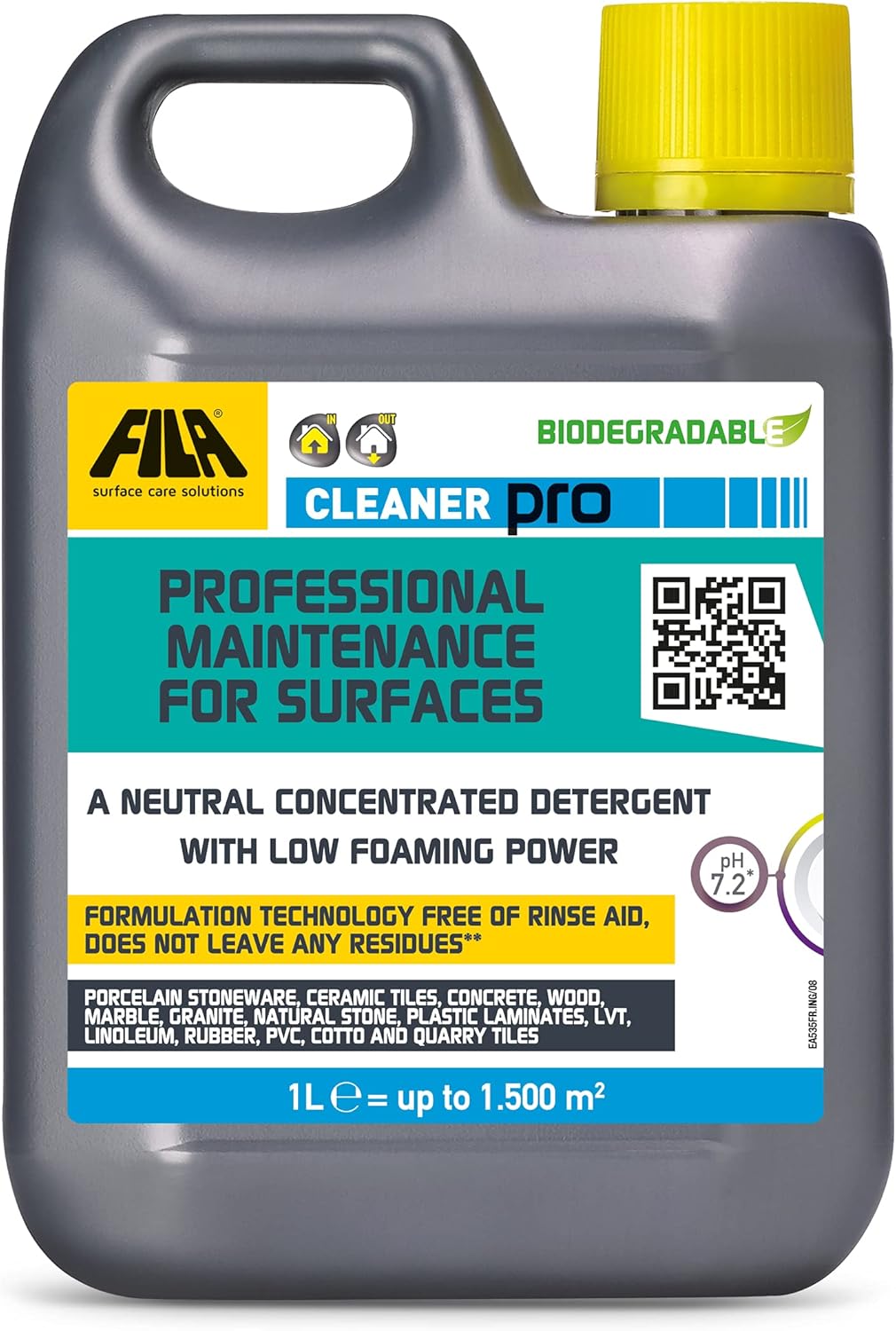
Fila Pro Floor Cleaner
|
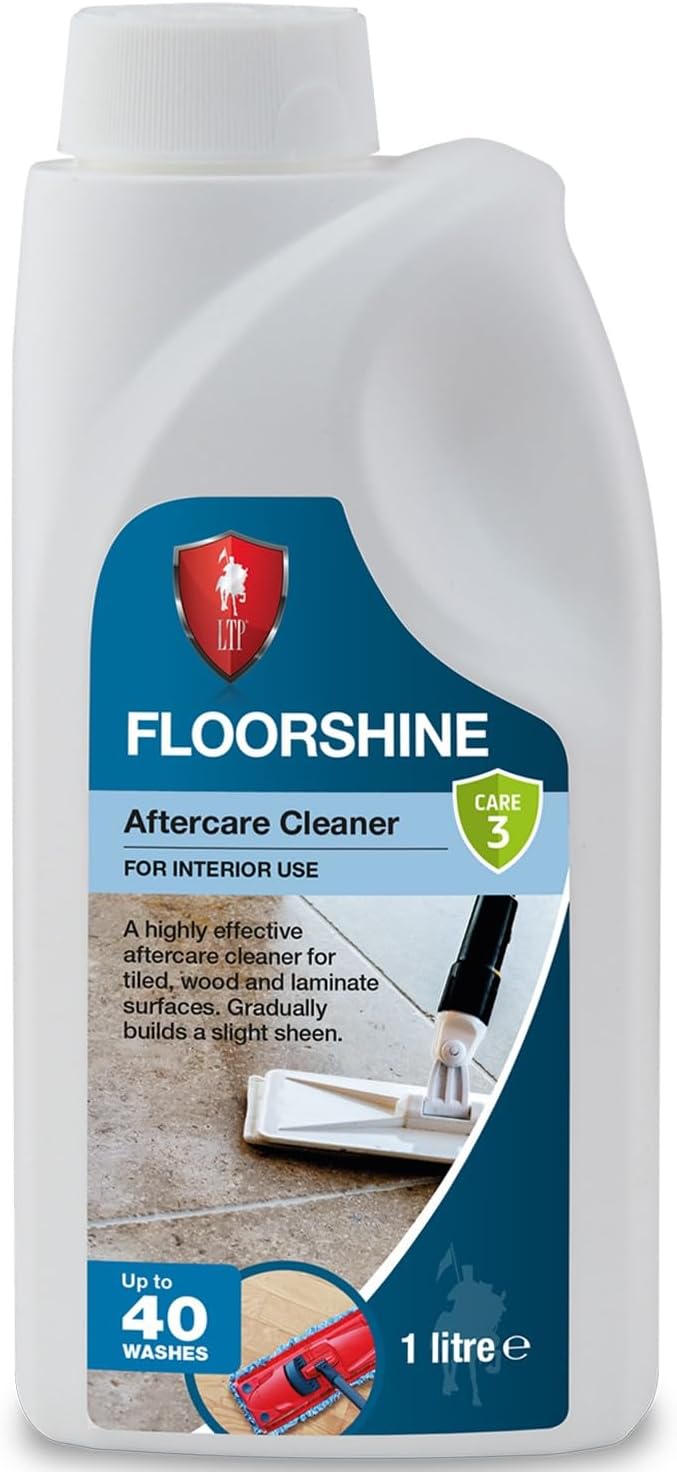
LTP Floorshine
|
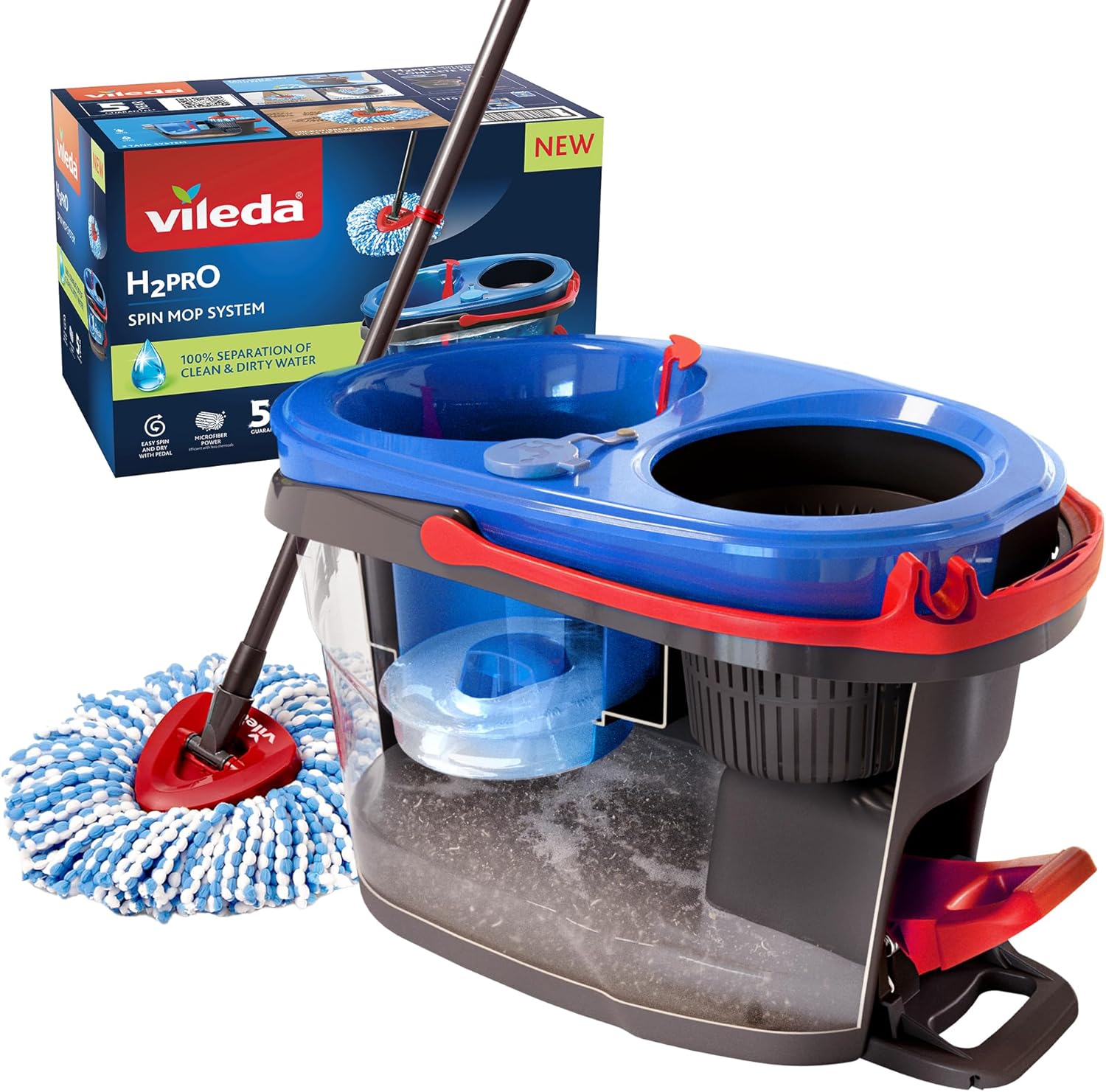
Vileda H2PrO Spin Mop System
|
Analyzing the Environmental Factors That Cause Fading in Quarry Tiles
Quarry tiles installed outdoors face a persistent barrage of environmental stressors that gradually diminish their color and texture. While renowned for their strength, even the most resilient surfaces succumb to the relentless forces of nature over time, leading to a faded, lackluster appearance that detracts from their overall beauty.
The Role of Weather in the Color Fading of Quarry Tiles
One of the most significant contributors to fading is the weather, particularly the influence of rain and freeze-thaw cycles. Rainwater can seep into the porous surface of unsealed or poorly sealed tiles, carrying minerals and contaminants that can stain or leach color from the tiles. When temperatures plummet, moisture trapped within the tile expands as it freezes, resulting in micro-cracks and surface flaking. This repetitive freeze-thaw action exposes the tile’s inner body, which frequently contains lighter, less pigmented materials, leading to a noticeable loss of vibrancy and depth.
Examining Surface Wear and Layer Exposure in Quarry Tiles
Quarry tiles are typically constructed with a dense outer crust that houses the strongest color. As this outer layer wears away—due to foot traffic, abrasion, or environmental erosion—the inner layer becomes increasingly visible. This inner layer usually has a rougher texture and features larger aggregate particles with a lighter, uneven hue. Consequently, the result is a patchy appearance that lacks the richness and depth of the original surface, significantly detracting from the overall aesthetic appeal of the tiles.
The Significance of Chemical Damage in Quarry Tile Fading
Outdoor cleaning frequently necessitates the use of powerful chemicals to combat moss, algae, or grime. Unfortunately, these strong solutions can weaken sealers and strip away protective coatings. Once the sealer is compromised, the tile becomes more susceptible to staining, mineral deposits, and accelerated wear. Over time, this chemical exposure significantly contributes to fading and surface dullness, further diminishing the overall visual appeal of the exterior surfaces.
Investigating Indoor Factors That Lead to Fading in Quarry Tiles
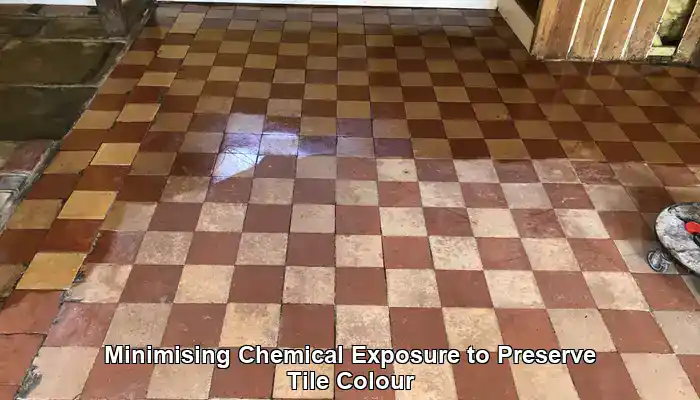
While outdoor quarry tiles contend with environmental elements, indoor tiles face a distinct set of challenges that can be equally damaging over time. From high foot traffic areas to routine cleaning practices, the fading of indoor quarry tiles often results from a slow, cumulative process driven by wear, surface deterioration, and chemical exposure.
Managing Abrasive Wear and Crust Loss in Indoor Quarry Tiles
Quarry tiles are constructed with a dense, pigmented outer crust that provides their rich color and smooth finish. Indoors, particularly in high-traffic areas like kitchens, hallways, and commercial spaces, this outer layer gradually wears away. As the surface erodes, the inner body of the tile becomes exposed. This inner layer typically contains larger mineral particles and has a more porous structure, resulting in a noticeable shift in color and texture. Earth-toned tiles may start to appear mottled or washed out, showcasing lighter patches where the crust has thinned.
Addressing Surface Pitting and Soil Accumulation in Quarry Tiles
As the surface wears down, micro-abrasions and pits start to form. These tiny indentations trap soil, grease, and cleaning residues. Over time, the accumulation of grime in these pits leads to uneven staining and dullness. Even regular cleaning may not fully eliminate embedded dirt, resulting in a faded and blotchy appearance. This issue is especially prevalent in older floors that have not been adequately sealed or maintained, highlighting the importance of regular upkeep in preserving the tiles’ appearance.
Understanding Efflorescence and Mineral Migration in Quarry Tiles
Efflorescence is another crucial factor that contributes to indoor tile fading. This phenomenon arises when moisture beneath the tile moves upward, carrying soluble salts to the surface. As the water evaporates, it leaves behind a white, powdery residue that lightens the tile’s appearance and can cause surface damage. Efflorescence is particularly common in areas lacking proper subfloor ventilation or where tiles are installed over damp concrete. If neglected, it can deteriorate the tile’s surface and complicate cleaning efforts.
The Detrimental Impact of Chemical Overuse on Quarry Tiles
Indoor cleaning routines often rely on strong chemical agents—especially in commercial or food preparation areas. While these products can effectively tackle grease and stains, they also have the potential to strip away sealers and protective coatings. Once the sealer is compromised, the tile becomes more porous and vulnerable to staining, wear, and further fading. Acidic or alkaline cleaners can even etch the surface, permanently altering its texture and color. Over time, continued exposure to harsh chemicals accelerates the degradation of both the tile and its finish, exacerbating fading.
Essential Maintenance Practices for Preserving the Color of Quarry Tiles
The fading of indoor quarry tiles is often preventable with proper care. Utilizing pH-neutral cleaners, adhering to a regular sealing schedule, and avoiding abrasive tools can significantly extend the life and appearance of the tiles. For older floors showing signs of wear, engaging professional restoration services—including deep cleaning, re-sealing, and color enhancement—can help revive their original beauty and restore vibrancy, ensuring they remain a stunning feature in your home.
Proven Prevention and Restoration Strategies for Quarry Tiles
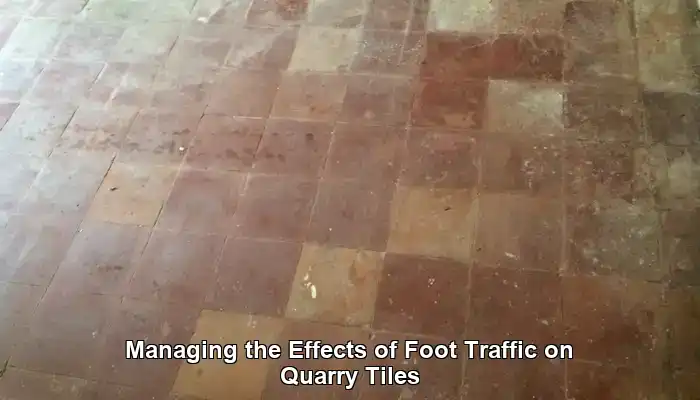
Understanding the reasons for quarry tiles fading is just the beginning—the true value lies in learning how to prevent this fading and restore their original beauty when wear inevitably occurs. Whether your tiles are indoors or outdoors, proactive maintenance and thoughtful restoration can significantly extend their lifespan and maintain their rich, earthy character.
Sealing as a Key Defense Against Fading
One of the most effective approaches to preventing fading is proper sealing. Quarry tiles are naturally porous, and without a protective barrier, they readily absorb moisture, dirt, and chemicals. A high-quality penetrating sealer fills the pores without forming a surface film, allowing the tile to breathe while repelling contaminants. For outdoor tiles, this is especially critical to safeguard against rain, frost, and algae growth. Indoors, sealing helps resist staining from spills, cleaning products, and foot traffic, significantly enhancing the longevity of the tiles.
Sealers should be reapplied regularly—typically every 1 to 3 years, depending on usage and exposure. A simple water-drop test can help determine when resealing is necessary: if water sinks into the surface instead of forming beads, it’s time for a refresh to maintain optimal protection against fading.
Smart Cleaning Practices: Avoiding Harsh Chemicals for Quarry Tiles
Routine cleaning is essential, but the cleaning products you choose matter significantly. Harsh chemicals, particularly those that are acidic or alkaline, can degrade sealers and etch the tile surface over time. This degradation leads to dullness, discoloration, and increased susceptibility to staining. Instead, favor pH-neutral cleaners specifically formulated for stone or tile surfaces. These products effectively lift dirt without jeopardizing the integrity of the tiles.
For stubborn grime or efflorescence, use targeted treatments sparingly and always follow with a thorough rinse. Avoid using bleach, ammonia, and vinegar-based solutions, which may seem effective but can cause long-term damage to the tile.
Maintenance Techniques to Sustain the Color of Quarry Tiles
Regular sweeping and damp mopping are vital for preventing soil buildup and surface wear. Use soft-bristle brushes or microfiber pads instead of abrasive scrubbers, which can erode the tile’s pigmented surface. In high-traffic areas, consider utilizing rugs or mats to minimize direct wear—especially near entryways or kitchen workstations, where foot traffic tends to be heaviest.
For outdoor tiles, pressure washing should be approached with care. While it can effectively eliminate surface dirt, excessive pressure may erode the tile or force water into cracks, potentially accelerating freeze-thaw damage. If pressure washing is necessary, maintain low pressure and keep the nozzle at a safe distance to protect the integrity of the tiles.
Professional Restoration Services: Revitalizing Faded Tiles
When fading becomes evident and routine maintenance is insufficient, professional restoration can reveal remarkable results. Restoration specialists use a combination of deep cleaning, mechanical resurfacing, and color enhancement techniques to rejuvenate tired tiles.
- Deep cleaning effectively removes embedded dirt, grease, and mineral deposits using specialized equipment and solutions tailored for tile care, restoring the tile’s original luster.
- Mechanical honing or polishing smooths worn surfaces and restores texture, particularly on indoor tiles exhibiting surface pitting.
- Color enhancement sealers can enrich faded tones, particularly in earth-toned tiles, by deepening the natural pigments without creating a glossy finish that may detract from their appeal.
In cases of severe wear, restoration may also involve regrouting, tile replacement, or applying protective coatings tailored to the specific environment of the tiles.
Establishing a Long-Term Care Plan for Quarry Tiles
Preventing future fading requires a long-term approach. Implement a maintenance schedule that includes regular inspections, cleaning, and resealing. Educate household members or staff about proper cleaning techniques and the significance of using appropriate products. For commercial spaces, consider collaborating with a floor care professional to create a tailored plan that addresses traffic levels and environmental conditions.
If your tiles are part of a heritage property or possess historical significance, consult with conservation experts before undertaking any restoration work. Preserving the authenticity of older quarry tiles often necessitates specialized techniques and materials to ensure their historical integrity remains intact.
Insights on Quarry Tile Maintenance and Care
Quarry tiles are known for their robust beauty and lasting charm, but even the most durable materials are not immune to the passage of time. Whether subjected to harsh outdoor elements or the persistent wear of indoor foot traffic, fading is a natural outcome of environmental stress, mechanical abrasion, and chemical exposure. From the erosion of the tile’s pigmented layer to the subtle impacts of efflorescence and surface pitting, each factor contributes to diminishing the tile’s original vibrancy and appeal.
Fortunately, fading does not need to be irreversible. With the right knowledge and care—regular sealing, gentle cleaning, and professional restoration when needed—quarry tiles can maintain their color and character for decades. Understanding the causes of fading empowers homeowners, property managers, and restoration specialists to adopt proactive measures that preserve both the aesthetic and structural integrity of these timeless surfaces.
Whether your tiles are part of a heritage property or a contemporary installation, their longevity hinges on how well they are cared for. By respecting the material and addressing its requirements, you ensure that your quarry tiles continue to share their story—rich in color, texture, and history—for years to come.
Frequently Asked Questions About Quarry Tile Care and Maintenance
Can faded quarry tiles be effectively restored?
Yes, quarry tiles can often be revitalized through deep cleaning, resealing, or even professional refinishing techniques, depending on the extent of the fading. Homeowners should explore their options for rejuvenating the beauty of their tiles.
What is the recommended frequency for cleaning quarry tiles?
Regular sweeping should be conducted weekly, with deeper cleaning every few months to maintain their appearance and prevent fading. Establishing a consistent routine is crucial to protect the vibrancy of the tiles.
Are there specific sealants designed for quarry tiles?
Yes, there are specialized sealants formulated specifically for quarry tiles that offer protection against moisture and UV rays, enhancing their longevity and appearance. Homeowners should consult professionals for recommendations on the best products.
Which cleaning products should be avoided on quarry tiles?
Avoid using acidic cleaners, harsh chemicals, and abrasive scrubbers, as these can damage the surface and contribute to fading. Instead, opt for gentle, tile-safe products that will not compromise the integrity of the tiles.
How can I tell if my quarry tiles need resealing?
If water no longer beads on the surface or if the tiles appear dull and stained, it may be time to reseal. Regular inspections can help ensure optimal protection and appearance.
Does indoor lighting affect the fading of tiles?
Indirect indoor lighting generally has less impact than UV rays, but prolonged exposure to bright light can contribute to gradual fading. Homeowners should consider lighting options when designing their spaces to mitigate this effect.
Can I use a steam cleaner on quarry tiles?
Steam cleaners can be too harsh for quarry tiles, potentially damaging their surface. It’s advisable to adhere to recommended cleaning methods to maintain their integrity and longevity.
Are some quarry tiles more prone to fading than others?
Yes, tiles made from lower-quality materials or pigments may fade more quickly compared to those made from superior materials. Homeowners should prioritize quality when selecting tiles for their spaces.
Does foot traffic significantly affect the lifespan of quarry tiles?
High foot traffic can lead to wear and tear, accelerating fading and increasing the need for maintenance. Homeowners should adopt strategies to manage foot traffic effectively, especially in busy areas.
Is it possible to completely prevent fading in quarry tiles?
While it is challenging to prevent fading entirely, regular maintenance, proper sealing, and selecting quality products can significantly minimize color loss over time, preserving the beauty of the tiles.
The article Why Do Some Quarry Tiles Fade Over Time: A Guide was first found on https://www.abbeyfloorcare.co.uk
The Article Quarry Tiles Fade Over Time: Understanding the Causes appeared first on https://fabritec.org
The Article Understanding Quarry Tiles: Why They Fade Over Time Was Found On https://limitsofstrategy.com

